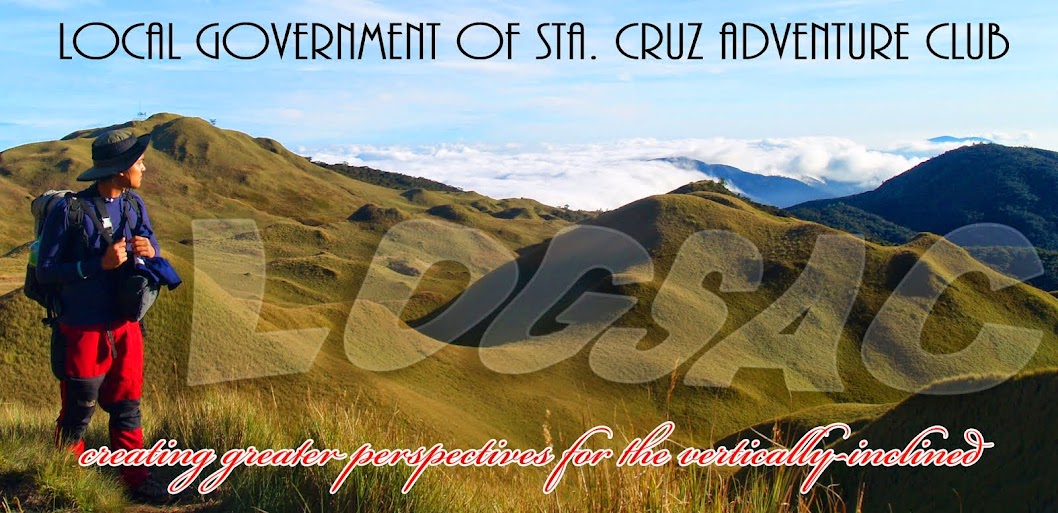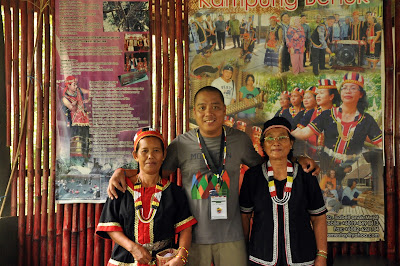I
have completed another trip in Malaysia last August 4-7 to attend to a
Community-Based Ecotourism (CBET) Capability Building course in the city of
Kuching, state of Sarawak. The event was organized by BIMP-EAGA and I was part
of the Philippine delegation which was headed by DOT Assistant Secretary Art
Boncato and participated by three Regional Directors and three Tourism Officers
with CBET areas enrolled under BIMP-EAGA. Fortunately, the Tibolo Cultural
Village was enrolled under the program which came just right for me to justify
my participation to the course. My salute to ASEC Art for always steering initiatives
that open up opportunities for ecotourism in Mindanao.

As
I noticed, Kuching is another city worth emulating for. I observed the higher
level of discipline among its residents. Unlike any other big cities in the
world, Kuching is not saturated with structures. I witnessed how its government
harmoniously implemented a solid and comprehensive urban plan. The major roads
are wide and traffic condition is managed well.
Its
main river system situated right at the heart of the city is very clean and is
even considered the blood vessel of Sarawak. They have developed it into one of
the world’s most attractive river tourism destinations as a strategy to prevent
illegal settlers. We had a short river cruise in our first day and there we
were treated with a very memorable river boat entertainment and delectable
foods of Malaysia.
Just
recently, Kuching was declared as “City of Unity”, the very first in the world
which caused all its people to celebrate. To have such prestigious citation involves
complying twelve criteria and Kuching made it all. According to our tour guide
Bob, Kuching is a good example of a city that reveals the unity of spirit. The
communities are attentive and sensitive to the restrictions of other religions
and races. They have maintained a high level of unity. Kuching also has higher
rate of inter-marriages as compared to other cities in the world. Truly, the
declaration added another crown to their already-colorful timeline of this
place known as the city of cats and hornbills.
On
the second day of the course, we traveled for more than an hour to the town of
Padawan and were immersed into the long houses of Sarawak, a cultural community-managed
homestays as accommodation support for tourists who would like to stay in the
area for a night or two. The homestays are traditional dwellings of the
cultural subdivisions of the Borneo Island such as the Iban, Bidayuh and Orang
Ulu. Presently, the long houses are an integral tour destination of Malaysia
where one can access all other natural and cultural sites of Sarawak such as
waterfalls, caves, rivers and hot springs.
On
our last day in the city, we visited the Sarawak Cultural Village to witness
the Rainforest World Music Festival. It is a unique festival that brings together
on the same stage world renowned musicians from all over the world. What is
more unique about this event is that it is being staged in the middle of a
rainforest where the music played thrillingly blended well with the chirping of
birds and insects. It was some kind of a cultural woodstuck.
Meanwhile,
the Sarawak Cultural Village is a prime tourist destination in Malaysia
composed of resorts, golf course, long houses of Ibans and Malays and other
features. It is home to Gunung Santubong Natural Park and is lied within the
Kuching Wetlands area.
In a nutshell, my third
time to visit Malaysia is an ultimate experience. The country, which is distinctly located in
the equator, has lived up to its tag line “Truly Asia”. For me, Malaysia is one
of the best countries in the world in terms of making tourism as an engine for
overall economic growth and development. And Kuching deserves to be in the list
of one of the most promising cities in the world.





















